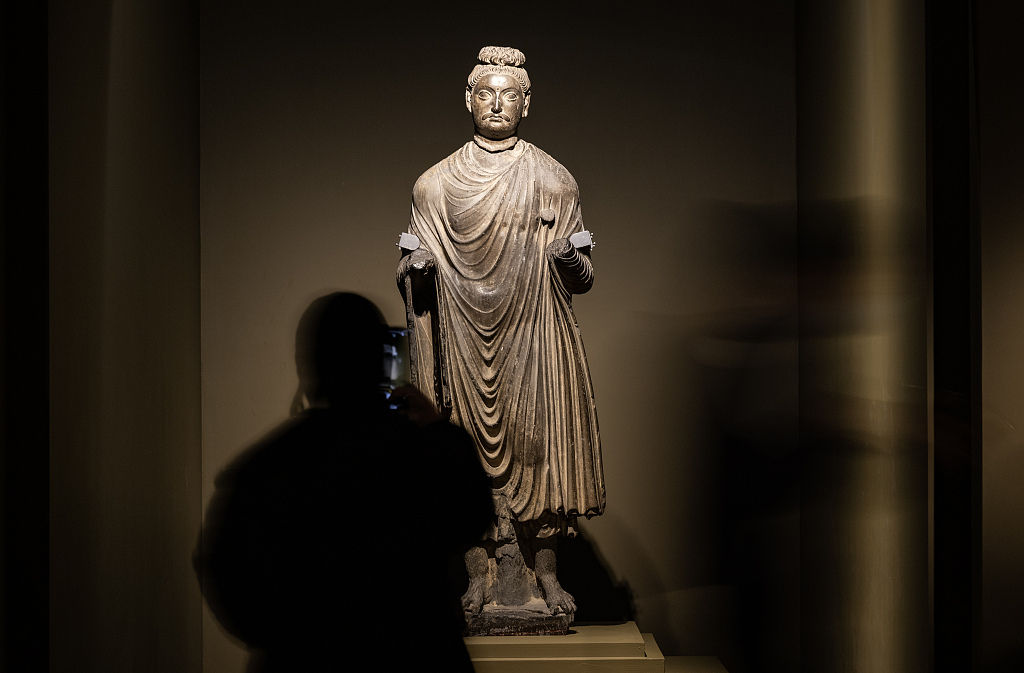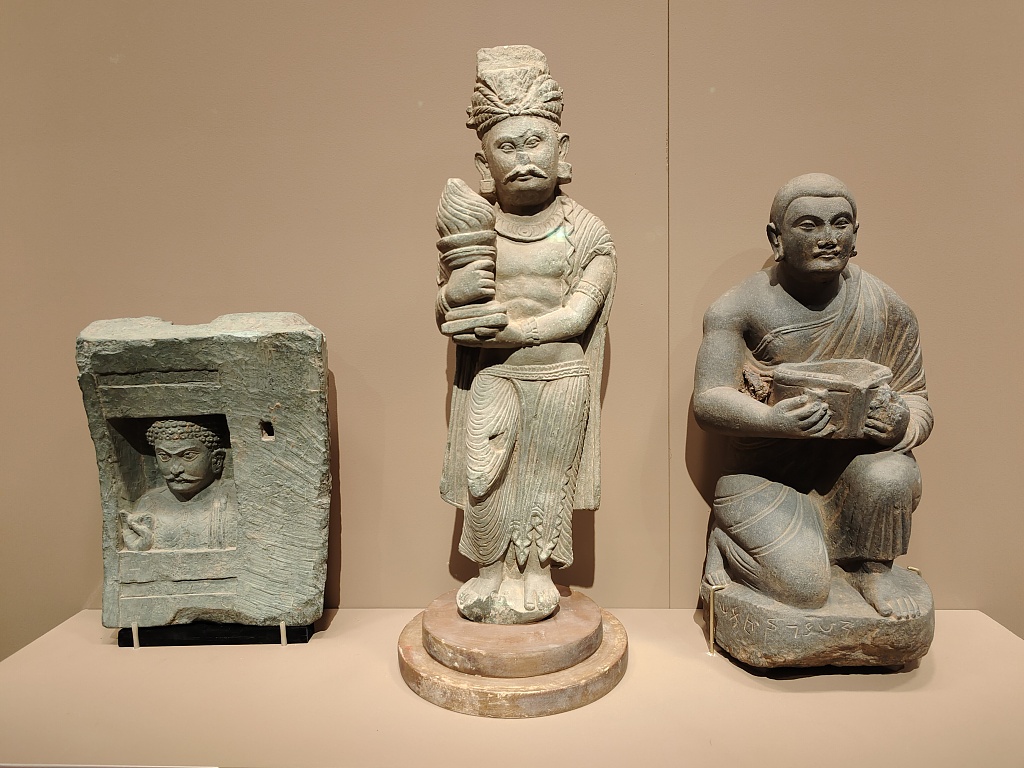The largest-ever Gandhara art exhibition held in China kicked off on Wednesday at the Hall of Literary Glory at the Palace Museum in Beijing.

A visitor takes a photo of a life-sized statue at the 'Gandhara Heritage Along the Silk Road' exhibition held at the Palace Museum, Beijing. /CFP
A visitor takes a photo of a life-sized statue at the 'Gandhara Heritage Along the Silk Road' exhibition held at the Palace Museum, Beijing. /CFP
Co-organized by China's Palace Museum and the Department of Archaeology and Museums of Pakistan's National Heritage and Culture Division, the "Gandhara Heritage Along the Silk Road" exhibition displays 203 cultural relics and artifacts, 173 on loan from museums in Pakistan and 30 collected by the Palace Museum.
Exhibits include Buddha figures, components of pagodas and examples of gold and silver ware from the ancient Gandhara civilization, showcasing the diverse splendor of Gandhara art.

Artifacts from the 'Gandhara Heritage Along the Silk Road' exhibition are displayed at the Palace Museum, Beijing. /CFP
Artifacts from the 'Gandhara Heritage Along the Silk Road' exhibition are displayed at the Palace Museum, Beijing. /CFP
The exhibits from Pakistan date back from the 2nd century B.C to the 10th century A.D., while the collection from the Palace Museum unearthed in Tibet demonstrates the long history of trade and cultural exchanges between China and Pakistan.
Gandhara was located in present-day northwestern Pakistan and southeastern Afghanistan. It first emerged in the 6th century B.C., serving as an important junction on the ancient Silk Road linking China and Europe for more than a millennium.

Artifacts from the 'Gandhara Heritage Along the Silk Road' exhibition are displayed at the Palace Museum, Beijing. /CFP
Artifacts from the 'Gandhara Heritage Along the Silk Road' exhibition are displayed at the Palace Museum, Beijing. /CFP
The exhibition offers a comprehensive overview of Gandhara art and its influence on the surrounding civilizations. It will last until mid-June.